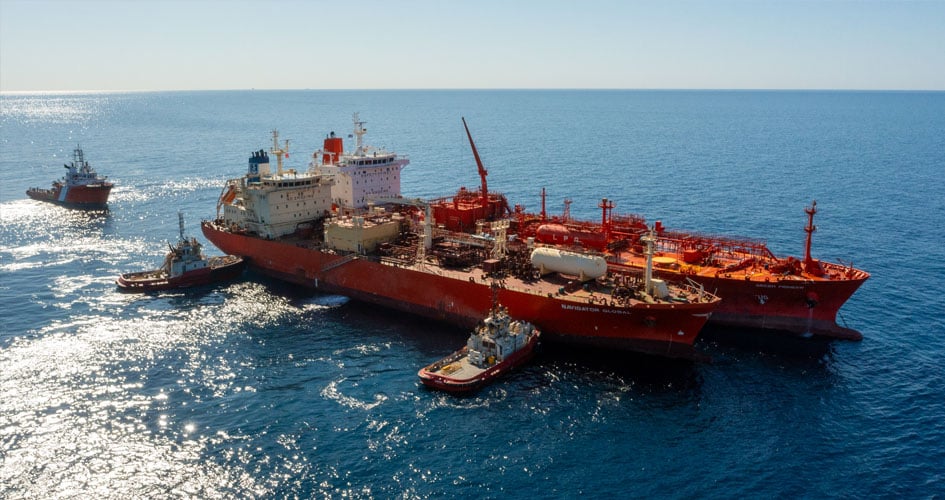The world’s first ship-to-ship transfer of ammonia in a working port environment has been successfully completed in a joint effort by Yara Clean Ammonia, Pilbara Ports Authority, and the Global Centre for Maritime Decarbonisation (GCMD). The transfer, conducted at Port Dampier in Western Australia’s Pilbara region, is a significant step forward in realising ammonia as a viable, low-emission fuel for global shipping.
The ammonia transfer was conducted between two vessels: the Green Pioneer, a 35,000 cubic metre (cbm) ammonia carrier owned by MOL, and the Navigator Global, a 22,500 cbm ammonia carrier owned by Navigator Gas. A dual transfer of 4,000 cbm of ammonia was completed, with ammonia first transferred from the Green Pioneer to the Navigator Global, and then back. Yara, drawing on their extensive experience in ammonia handling, nominated the vessel and supplied the ammonia used for the operation.
“This demonstrates that ammonia transfer can be done with the highest safety standards and efficiency in a working port environment. The transfer is a major milestone to decarbonize shipping using low-emission ammonia as fuel,” said Murali Srinivasan, SVP Commercial of Yara Clean Ammonia.
Ammonia, which does not emit CO2 when burned, is seen as a viable solution for decarbonising the shipping industry. Produced using renewable energy or carbon capture and storage, low-emission ammonia has the potential to significantly reduce the shipping industry’s carbon footprint. International shipping currently accounts for 3% of global greenhouse gas emissions, and clean ammonia could help meet the International Maritime Organization’s (IMO) decarbonization targets.
The partnership between Yara Clean Ammonia and Pilbara Ports Authority has been in place for over two years, with a focus on investigating the demand for ammonia as a fuel, required infrastructure, safety guidelines, and the necessary regulatory framework. This partnership expanded with the involvement of GCMD, which brought additional partners to ensure the transfer was executed safely and efficiently.
Port Dampier is well-suited for such operations, with its experience handling ammonia cargoes from Yara Pilbara’s nearby operations, which have safely shipped 11.8 million tonnes of ammonia to date. The successful transfer further establishes the Pilbara region as a potential hub for ammonia bunkering and fuels the growing movement toward zero-emission shipping.
Yara Pilbara’s Chief Operations Officer, Laurent Trost, described the trials as a critical step in decarbonizing shipping and highlighted Yara’s broader initiatives: “We currently have the Project Yuri renewable hydrogen demonstration plant under construction, which will begin injecting green molecules into our ammonia production next year. We are also investigating carbon capture and storage to significantly cut carbon output from our operations.”
“International shipping accounts for 3% of the global GHG-emissions and we see clean ammonia as the low to zero-emission fuel to decarbonize the shipping industry and meet the International Maritime Organization (IMO) targets. For more than a century we have been producing and shipping ammonia with the highest safety standards and efficient ammonia operations. The successful ship-to-ship transfer of ammonia was a critical learning step in enabling ammonia bunkering operations in a port environment as global shipping moves to effective use of ammonia as a fuel,” said Srinivasan.
